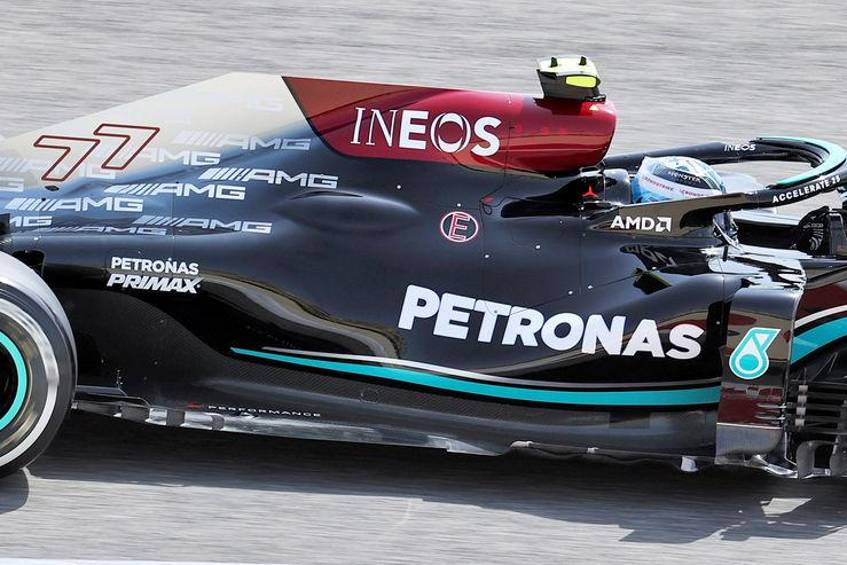On the first day of the test, the technology fans mainly looked at the underbody cut by the regulations. The question was how the engineers would get the lost downforce back. We will show you the different solutions ...

For a long time, the teams kept a secret about the exact shape of their sub-floors . At the start of the test in Bahrain , the cards were finally revealed. With detailed technical pictures, we will show you the different solutions that the aerodynamicists have come up with.
The engineers were only informed in September last year that the underbody of the 2021 cars had to be trimmed by ten centimeters in the rear area. The intervention should artificially reduce the downforce so that the load on the Pirelli tires does not increase further and further.
But technicians in Formula 1 are known to be reluctant to be slowed down. And so the challenge was to minimize the loss of contact pressure as much as possible. The technology fans were excitedly looking forward to the presentations over the past few weeks. But in many places the engineers did not want to reveal their cards early.
Red Bull didn't show any pictures of his new car . Alpine chose the cutouts in the photos of the shakedown so cleverly that the outer edge of the underbody could not be seen. And Mercedes even built a screen especially for the official studio images so as not to reveal the aerodynamics secret too early. And so the fans had to bepatientuntil the start of the test in Bahrain .
Mercedes falls out of line
When the cars rolled out of the garage for the first time on Friday (March 12th), the long wait was finally over. Conveniently, the entire field was pushed onto the home straight before the start of the photo session. The F1 paparazzi didn't last long. After the group picture was taken, the lenses were directed towards the sub-floors .
Above all , the photographers targeted the Mercedes . A closer look was particularly worthwhile here. The black painted silver arrow shows a striking wave profile on the outer edge in the front area of the underbody . The purpose of the exercise is clear: the waves artificially increase the surface area, which is supposed to compensate for the loss in the rear area.
With the help of an additional horizontal element, the flow is forced close to the subsoil . This reduces turbulence and calms the air flow towards the rear. The area directly in front of the rear wheels is also worth a second look. Here the sub-floor bends slightly upwards on the outside. A combination of vertical and horizontal fins is also mounted on the top.
Red Bull without new ideas
Even Red Bull had long been a secret to the underbody made. But the RB16B offers far less than the Mercedes . In the front there are five small flicks with which the air is directed outwards. At the back you can only see a few small vertical flow straighteners. Either aero guru Adrian Newey consciously relies on a no-frills variant or you don't want to show everything during the test.
A look through the field shows a lot of variation in the sensitive area. Ferrari and Aston Martin have apparently put a lot of effort into CFD simulations, and both cars have a lot of new elements. In teams like McLaren or Alpine, however, the technicians - especially in the rear area - seem to have hardly reacted to the rule change.
In the gallery we show you an overview of the various solutions.
